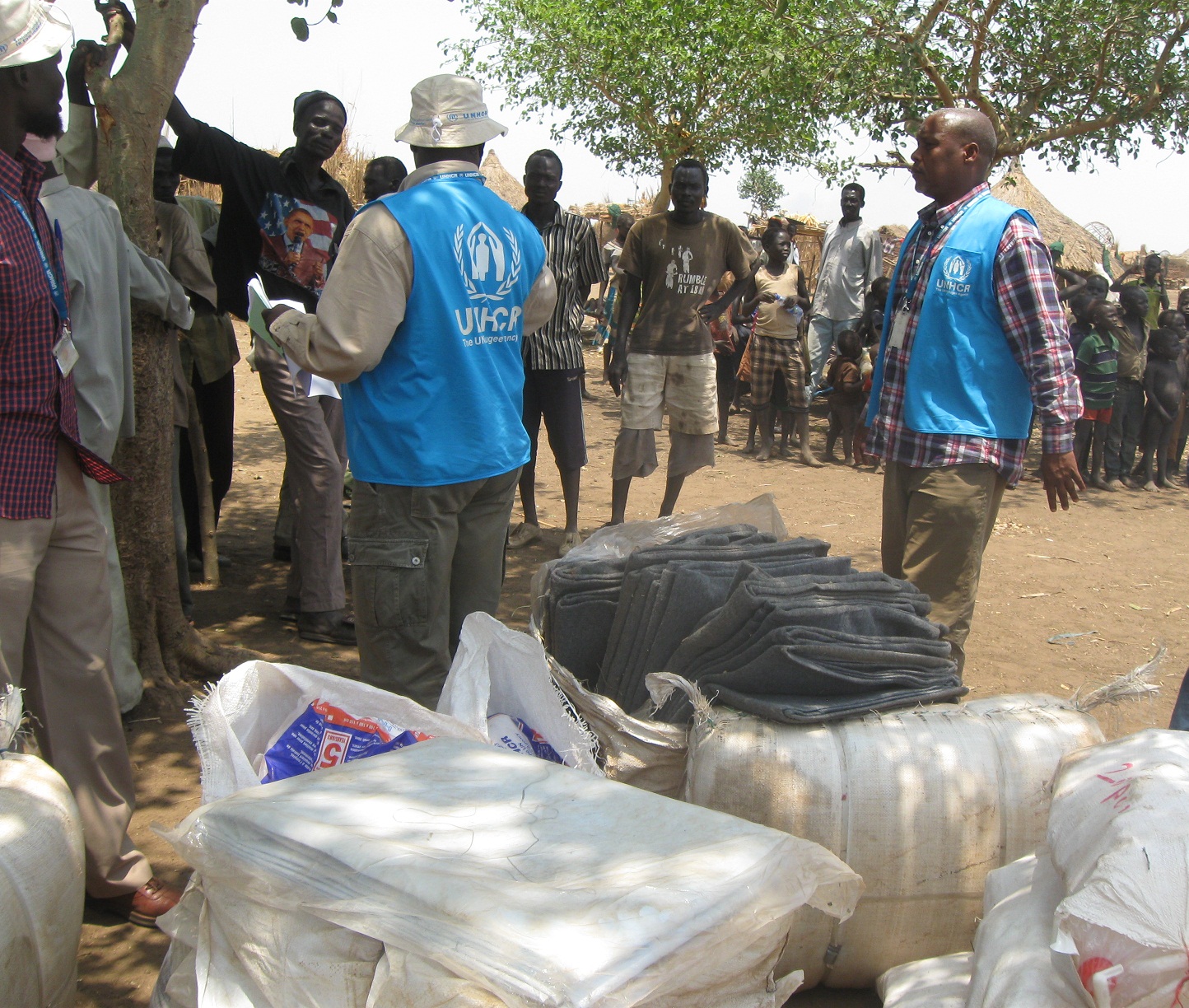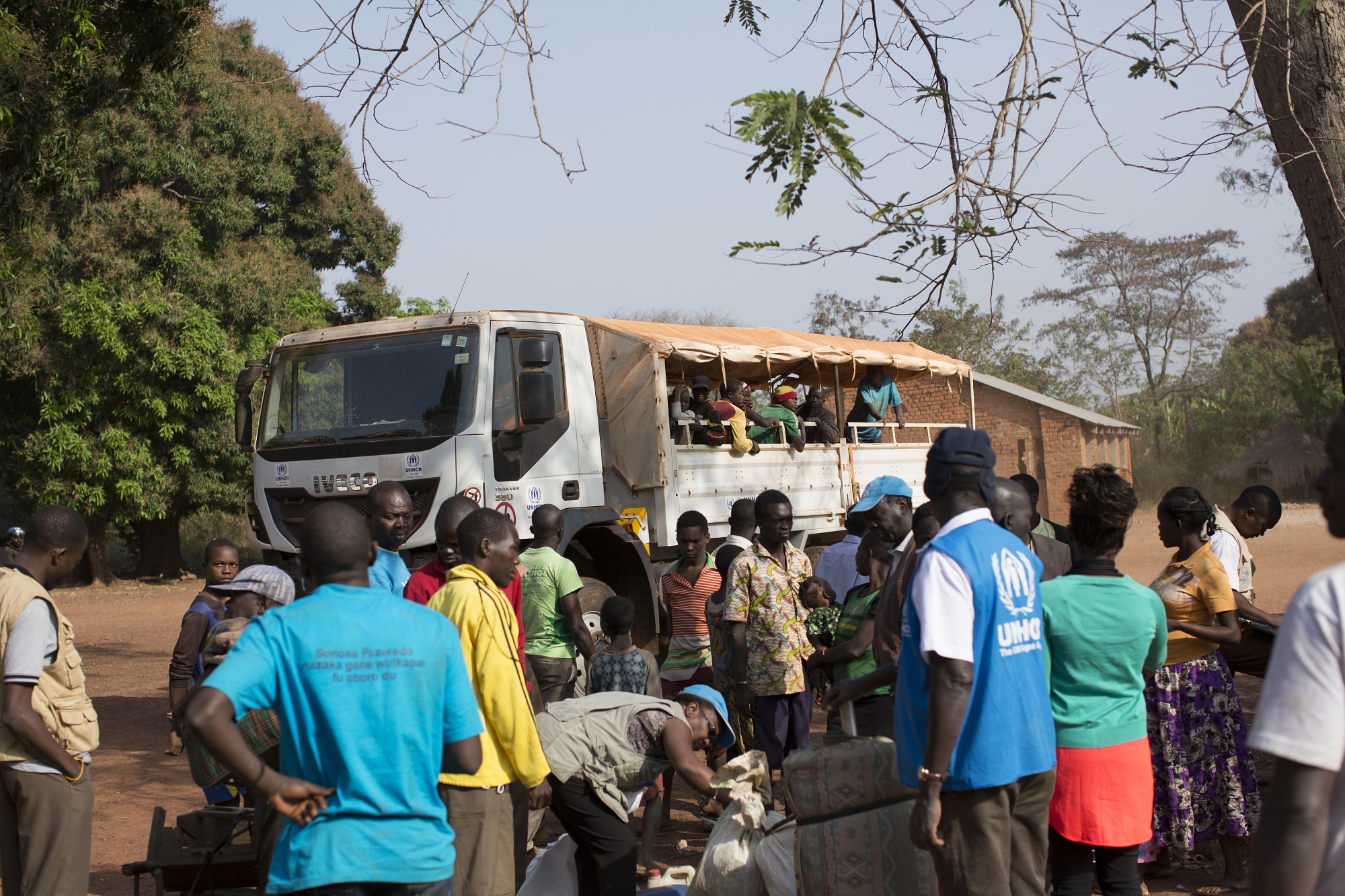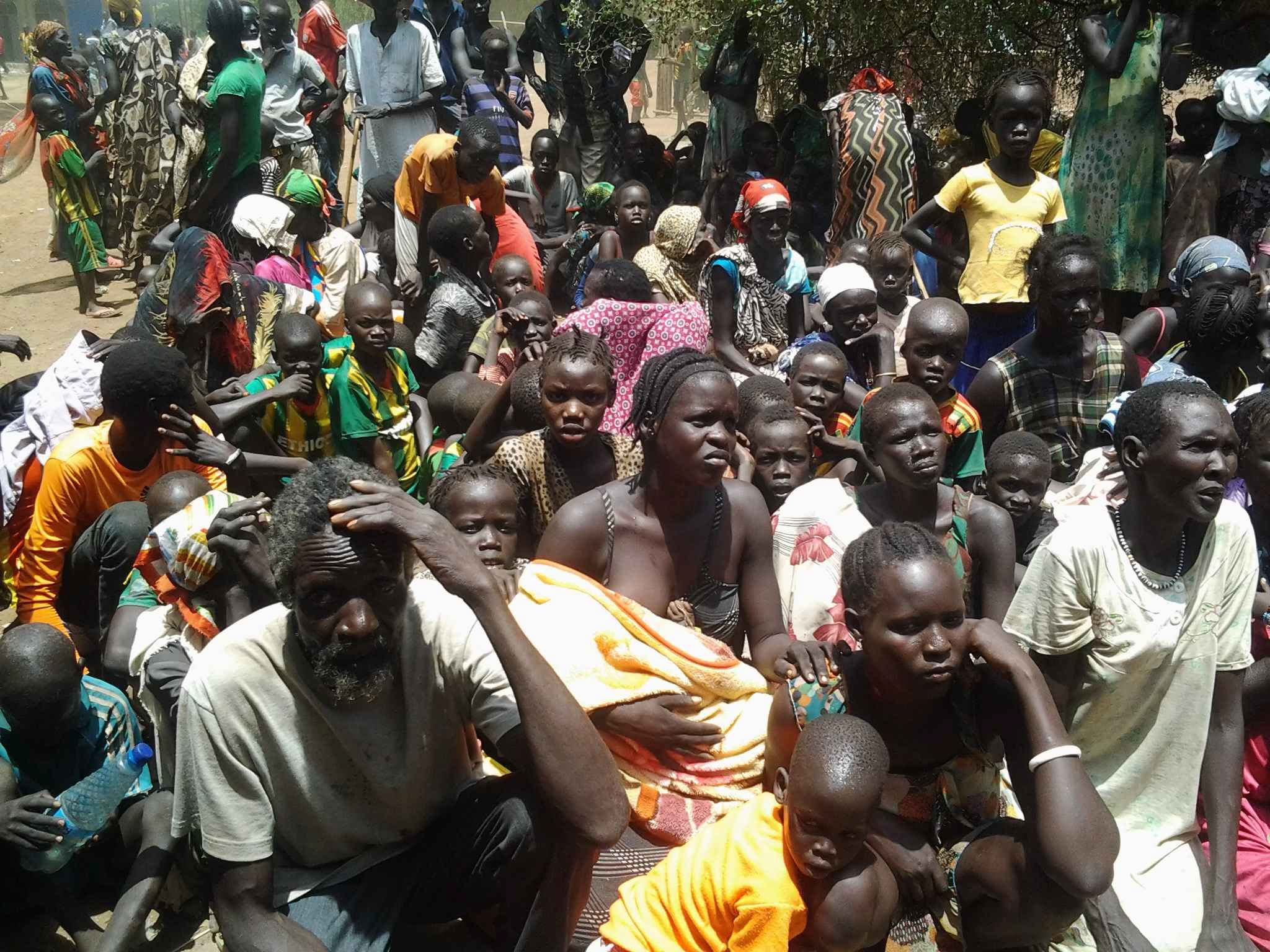UNHCR races to provide for displaced South Sudanese ahead of the rains
UNHCR races to provide for displaced South Sudanese ahead of the rains

JUBA, South Sudan, April 29 (UNHCR) - As the rainy season approaches in East Africa, the UN refugee agency is racing to supply essential relief for many of the more than 1 million people displaced by the fighting in South Sudan over the last four months.
Within South Sudan, UNHCR is concerned about terrified civilians who have been left without basic household items because they have been forced to flee violence, often more than once. This leaves them exposed to the elements without the ability to keep warm, cook or maintain basic standards of hygiene.
In total, 923,000 South Sudanese are forcibly displaced within their own country. These people are spread across more than 170 spontaneous and organized sites, with the highest increase having been in Upper Nile state. More than 293,000 people have become refugees in neighbouring countries since last December. Some 4.9 million people need humanitarian assistance.
Today, UNHCR is due to airlift more relief supplies from Dubai directly to the South Sudan capital, Juba, for some 100,000 displaced people. The blankets, sleeping mats, water buckets and other relief items will be distributed mainly in Unity, Upper Nile and Jonglei states. Once the rainy season begins in earnest next month, roads in these areas will become impassable for weeks.
Within South Sudan, heavy fighting broke out in the northern parts of Upper Nile last Wednesday and unconfirmed reports suggest that as many as 40,000 people may be fleeing fighting and heading towards Melut. Tension is also high in Bor in Jonglei state, with more people reported to be moving out of the town. Fighting has also caused displacement in Duk and Twic East counties.
Across the border in Sudan, UNHCR's priority is to relocate some 23,000 South Sudanese in White Nile state away from their current site. The site, called Kilo 10, will become inaccessible very soon as the rains increase.
UN agencies, the Sudanese Red Crescent Society and the government of Sudan last week conducted a one-day assessment mission to two relocation sites proposed by authorities. The sites both appear suitable, and host communities did not express any objections to having refugees move there. Sudan has taken in more than 65,000 South Sudanese since fighting broke out in mid-December last year.
Meanwhile, in Ethiopia, UNHCR and its partners are expanding accommodation for nearly 100,000 refugees who have arrived in the Gambella region in the west of the country.
"We have finished flying in 4,000 emergency family tents and have already set up 2,000 of them at Leitchuor Camp. Another 1,500 are being sent to Kule Camp. The remainder will be kept in stock for when we need them," a UNHCR spokesperson said.
"We have also begun demarcating and clearing land for a fifth camp near Kule. It is expected to open in the beginning of May and take in 25,000 refugees with an eventual capacity of 30,000," the spokesperson added.
Also in the Gambella area, UNHCR and its partners are expanding registration and reception. A new registration centre at Burubiey, on the border with South Sudan's Jonglei state, will cut the time refugees have to travel to get registered by five days if they walk or 15 hours if they take a boat. The centre is run by UNHCR and the Ethiopian government's Administration of Refugee and Returnee Affairs.
At another border point, Pagak, bordering South Sudan's Upper Nile state, joint registration has also resumed after an interruption of more than two weeks to move some 700 Ethiopian citizens who were trying to register as refugees in order to get aid.








